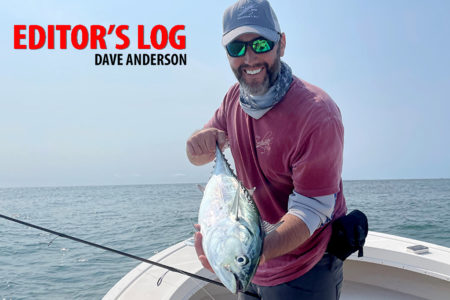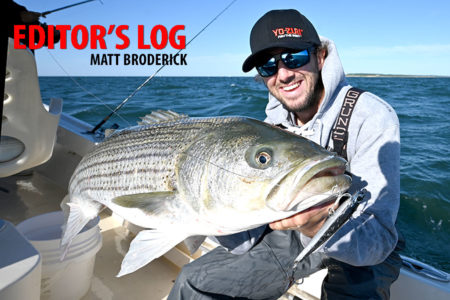I thought I would share the following letter from a Fisherman reader referring to the big mako shark that appeared on issue #23, dated 8/9/18, and also my response, in hopes of setting the record straight for others who may share the same concerns.
Dear Fred:
Why would anyone want to kill an 886-pound mako and why would The Fisherman Magazine want to advertise the killing of such a magnificent animal by showcasing its photo on your front cover? It’s the same old story, I guess – to sell more copies. If you people care at all about the future of our fisheries you shouldn’t publish those photos and make these jackasses look like big heroes. The same holds true about the photos you guys publish of the numerous cow stripers being caught in Montauk. That’s three million eggs down the drain for each cow striper killed. How about encouraging your readers to catch, photograph and release those great fish?
Thank you, Frank @#$%^&*
Hi Frank,
You and I might not want to kill a fish like that, but some people have no issue with it, and it is perfectly within their right. I’m not about to pass judgement on them for taking a trophy fish like that, although it would make me happy to see a fish like that cut loose. If you have been following The Fisherman and my editorials then you should know that I frequently encourage catch and release photos as the best way to get on the cover, as they take priority over kill photos. Case in point – issues 18, 24 and 27 all have big bass that were released on the cover. They take precedence over dead ones but there is also nothing wrong with publishing a dead 62 on the cover, especially if it’s someone’s first big bass or the biggest bass they ever caught. I don’t want to hear complaints from anyone about a fish like that unless they have already caught and released a 60 pounder. What you and other readers don’t know about some of these fish is that in a few cases the angler tried to release the fish unsuccessfully. Some of those fish just don’t make it, but I give them credit for trying. There is also the issue of weighing those big cows and hanging them vertically from a scale. Tests have shown that the organs in big bass can be displaced by weighing them in that manner. The safest and surest way to release a big fish, or any fish for that matter is to never remove it from the water, which in some cases is simply not possible.
I do have an issue with those who have caught plenty of big fish, fish several days a week, yet insist on keeping a big fish or boat limit every time out. What can you possibly be doing with all of that meat? And then I get complaints from a couple of guys I know who now believe no one should kill a striper and chastise those who do, but forget about all of the big bass they killed and shipped to market in the ‘70s and ‘80s from Long Island and Cape Cod. I’ve also been told by some fishery biologists that while those big bass release a larger number of eggs, the survival rate is relatively low compared to younger females. On the bright side, we currently have multiple year classes that seem to be thriving based on the numbers of small bass (12 to 27 inches) in our waters. That is very encouraging for the immediate future.
Finally, to anyone who thinks that the publishing of a big striper on the cover encourages the killing of more big bass, I have a simple two word answer – bull crap! People that are going to kill a big fish are going to kill it regardless. They are not killing it to get on the cover, especially when we have repeatedly stated that the surest way to get on the cover is with a good release photo.
As an aside, we don’t include striped bass in the Dream Boat Challenge despite a lot of pressure to do so. That in fact would encourage people to kill a big bass with the hopes of winning the contest and possibly a 60 or $70,000 boat. Thanks for sharing your opinion and good luck the rest of the season.


